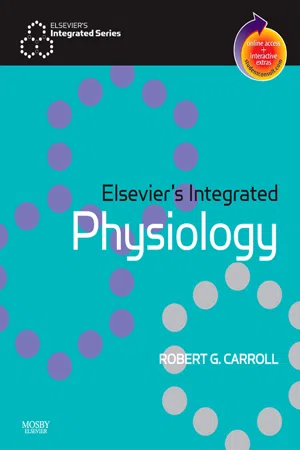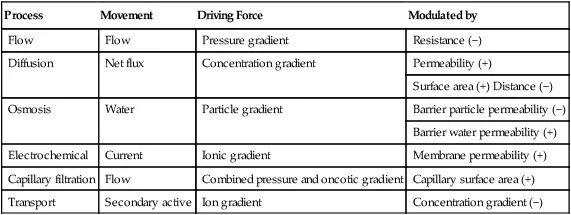
Elsevier's Integrated Physiology E-Book
Elsevier's Integrated Physiology E-Book
- 256 pages
- English
- ePUB (mobile friendly)
- Available on iOS & Android
About this book
Each title in the new Integrated series focuses on the core knowledge in a specific basic science discipline, while linking that information to related concepts from other disciplines. Case-based questions at the end of each chapter enable you to gauge your mastery of the material, and a color-coded format allows you to quickly find the specific guidance you need. Bonus STUDENT CONSULT access - included with the text - allows you to conveniently access the book's content online · clip content to your handheld device · link to content in other STUDENT CONSULT titles · and more! These concise and user-friendly references provide crucial guidance for the early years of medical training, as well as for exam preparation.- Includes case-based questions at the end of each chapter- Features a colour-coded format to facilitate quick reference and promote effective retention- Offers access to STUDENT CONSULT! At www.studentconsult.com, you'll find the complete text and illustrations of the book online, fully searchable · "Integration Links" to bonus content in other STUDENT CONSULT titles · content clipping for handheld devices · an interactive community center with a wealth of additional resources · and much more!
Frequently asked questions
- Essential is ideal for learners and professionals who enjoy exploring a wide range of subjects. Access the Essential Library with 800,000+ trusted titles and best-sellers across business, personal growth, and the humanities. Includes unlimited reading time and Standard Read Aloud voice.
- Complete: Perfect for advanced learners and researchers needing full, unrestricted access. Unlock 1.4M+ books across hundreds of subjects, including academic and specialized titles. The Complete Plan also includes advanced features like Premium Read Aloud and Research Assistant.
Please note we cannot support devices running on iOS 13 and Android 7 or earlier. Learn more about using the app.
Information
Physiology: The Regulation of Normal Body Function
PHYSIOLOGY
LEVELS OF ORGANIZATION

COMMON THEMES
Common Theme 1: Movement Across Barriers
| Process | Movement | Driving Force | Modulated by |
| Flow | Flow | Pressure gradient | Resistance (−) |
| Diffusion | Net flux | Concentration gradient | Permeability (+) |
| Surface area (+) Distance (−) | |||
| Osmosis | Water | Particle gradient | Barrier particle permeability (−) |
| Barrier water permeability (+) | |||
| Electrochemical | Current | Ionic gradient | Membrane permeability (+) |
| Capillary filtration | Flow | Combined pressure and oncotic gradient | Capillary surface area (+) |
| Transport | Secondary active | Ion gradient | Concentration gradient (−) |
Common Theme ...
Table of contents
- Cover image
- Title page
- Table of Contents
- Copyright
- Dedication
- Preface
- Editorial Review Board
- Series Preface
- Chapter 1: Physiology: The Regulation of Normal Body Function
- Chapter 2: The Integument
- Chapter 3: Body Fluid Distribution
- Chapter 4: Cellular Function
- Chapter 5: Musculoskeletal System
- Chapter 6: Blood and Hematopoiesis
- Chapter 7: The Heart
- Chapter 8: Vascular System
- Chapter 9: Integrated Cardiovascular Function
- Chapter 10: Pulmonary System
- Chapter 11: Renal System and Urinary Tract
- Chapter 12: Gastrointestinal System
- Chapter 13: Endocrine System
- Chapter 14: Female Reproductive System
- Chapter 15: Male Reproductive System
- Chapter 16: Life Span
- Chapter 17: Integration
- Case Studies
- Case Study Answers
- Index
